Caves are among the oldest wonders created by nature and humans. The oldest known cave paintings in the world were found in Indonesia and are over 45,000 years old. These ancient artworks show animals, hunting scenes, and symbols. They give us clues about early human life and beliefs. Some caves in Europe also date back over 30,000 years and hold beautiful prehistoric art. Now let's come to India. Do you know which is the oldest cave in India? It's the Barabar Caves in Bihar. These rock-cut caves were built during the Maurya Empire around 250 BCE. They are famous for their smooth walls and Ashokan inscriptions. In this article, we'll take a look at the oldest caves in India.
List of Oldest Caves in India
The Bhimbetka Rock Shelters in Madhya Pradesh are considered to host the oldest evidence of human-occupied caves and rock art in India. Some artwork dates back as far as 30,000 years, placing them in the Palaeolithic and Mesolithic periods.
However, the Barabar Caves in Bihar are recognised as the oldest surviving rock-cut (man-made) caves in India, dating to the Maurya Empire in the 3rd century BCE, and were dedicated by Emperor Ashoka to the Ajivika ascetics.
| Rank | Cave Name | Location | Estimated Age / Period | Notable Features/Notes |
| 1 | Bhimbetka Rock Shelters | Madhya Pradesh | 30,000 years (Palaeolithic) | Oldest known rock art in India |
| 2 | Barabar Caves | Bihar | 3rd century BCE | Oldest surviving rock-cut caves |
| 3 | Jogimara Caves | Chhattisgarh | 3rd BCE - 1st CE | Ancient non-religious painted cave |
| 4 | Ajanta Caves | Maharashtra | 2nd BCE - 5th CE | Buddhist monastic & mural tradition |
| 5 | Karla Caves | Maharashtra | 2nd BCE - 5th CE | Oldest chaityagriha, Buddhist monastery |
| 6 | Ellora Caves | Maharashtra | 6th century CE onwards | Hindu, Buddhist, and Jain rock-cut caves |
| 7 | Elephanta Caves | Maharashtra | 5th - 9th century CE | Rock-cut Shiva temples, faded murals |
| 8 | Bagh Caves | Madhya Pradesh | 5th - 7th century CE | Buddhist monastic caves, murals |
| 9 | Sittanavasal Cave | Tamil Nadu | 7th - 9th century CE | Jain monastery with aquatic paintings |
| 10 | Udayagiri Caves | Madhya Pradesh | 4th - 5th century CE | Gupta-era Hindu iconography |
1. Bhimbetka Rock Shelters
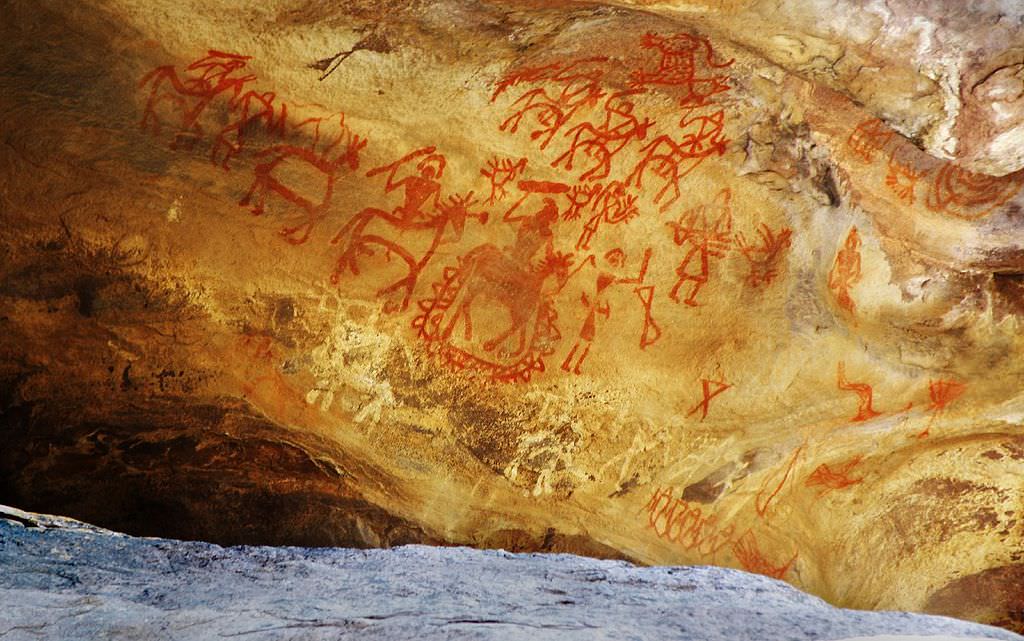
The Bhimbetka Rock Shelters in Madhya Pradesh are among the oldest prehistoric sites in India, featuring rock paintings that date back as early as 30,000 years ago during the Upper Palaeolithic period. This UNESCO World Heritage site offers a vivid chronicle of early human life, including scenes of hunting, dancing, rituals, and daily activities depicted with natural pigments. The site encompasses more than 750 rock shelters, reflecting the evolution of human artistry across eras.
2. Barabar Caves
Located in Bihar, the Barabar Caves are the oldest known surviving rock-cut caves in India, dating to the 3rd century BCE during the Maurya Empire. These caves, primarily used by the Ajivika sect, feature highly polished granite interiors and inscriptions from the time of Emperor Ashoka. Notable caves include Sudama and Lomas Rishi, which are characterised by their advanced architecture and "Mauryan polish". The craftsmanship of the Barabar Caves influenced subsequent rock-cut cave architecture in India, including Buddhist and Hindu cave temples.
3. Jogimara Caves
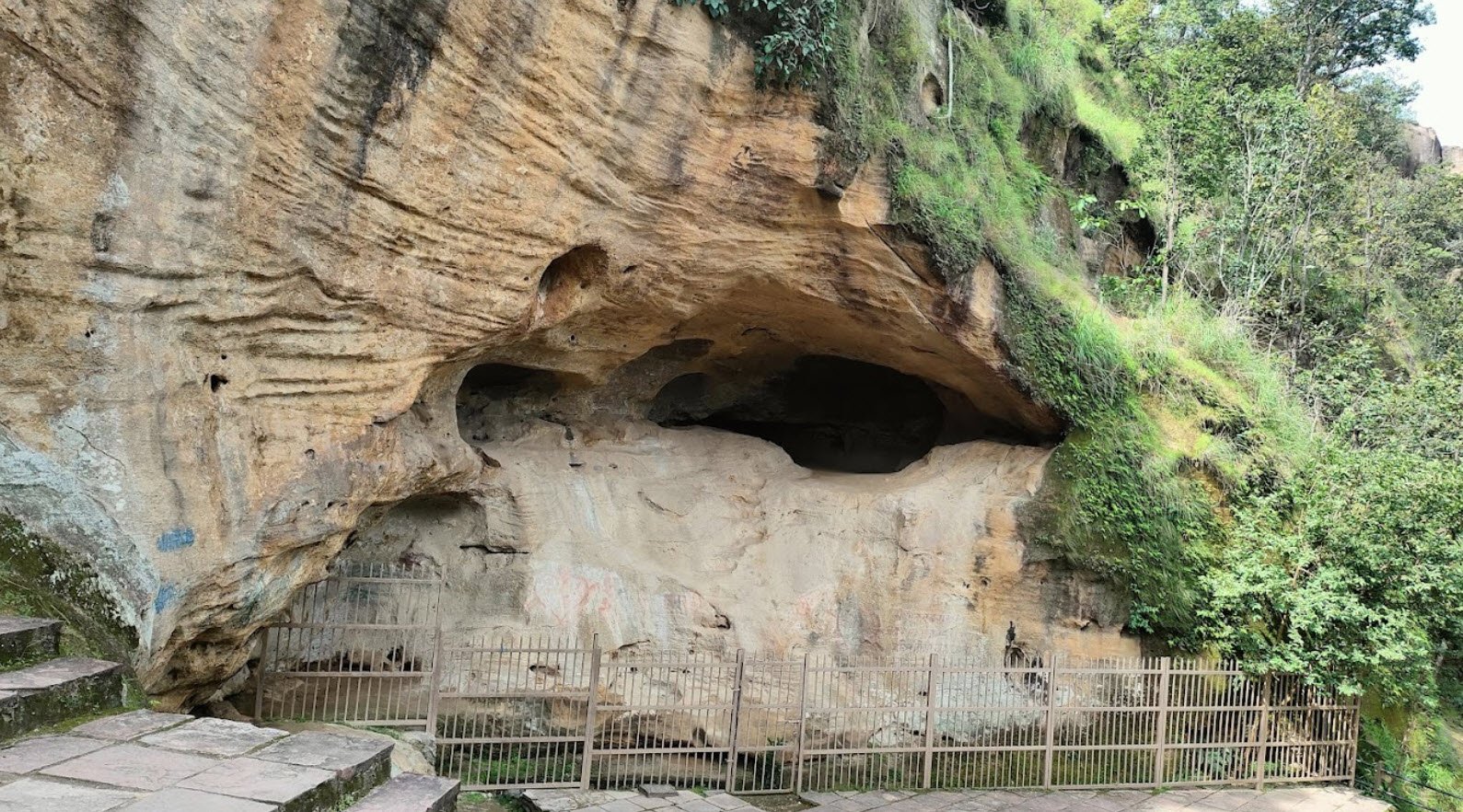
The Jogimara Caves, located in Chhattisgarh, are unique for being among the earliest non-religious painted caves in India, dating back to between the 3rd century BCE and the 1st century CE. Unlike other ancient caves that primarily reflect religious themes, Jogimara's paintings depict lively and secular scenes: daily life, animals, men and women, and hints of theatre performances. The lime-plastered walls boast paintings in red, yellow, black, and white, accompanied by ancient Magadhi and Brahmi script inscriptions.
4. Ajanta Caves
Ajanta Caves, located in Maharashtra, showcase monumental Buddhist art and monastic architecture from the 2nd century BCE to the 5th century CE. Renowned worldwide for their intricate murals and sculptures, these 30 rock-cut caves were developed in two distinct phases corresponding to major Buddhist influences—Hinayana and Mahayana. The paintings primarily illustrate scenes from the Jataka tales, Buddha's life, and elaborate depictions of court life, landscapes, and animals.
5. Karla Caves
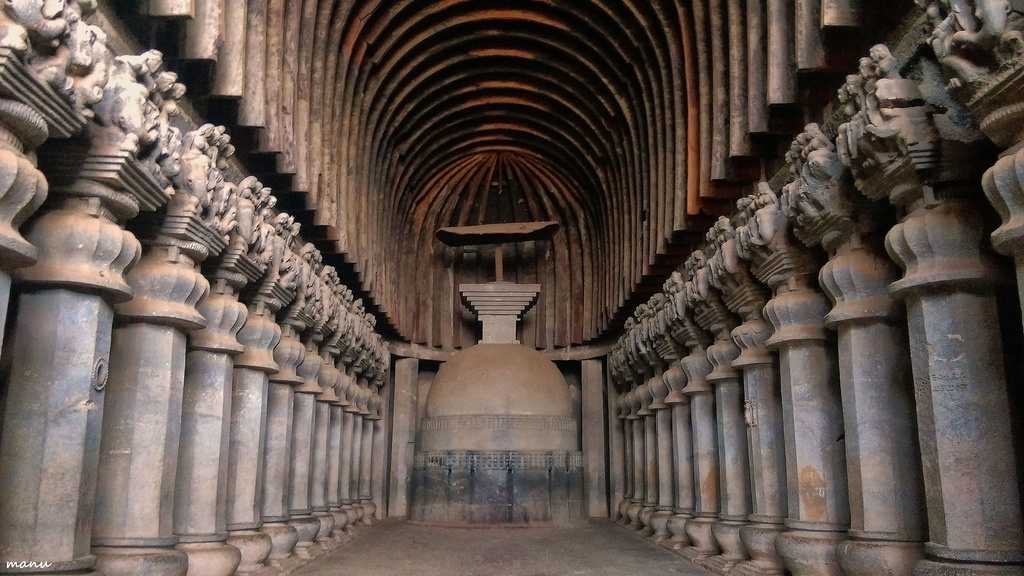
The Karla Caves, carved in Lonavala, Maharashtra, date from the 2nd century BCE to the 5th century CE and are revered for housing the largest surviving rock-cut prayer hall (chaityagriha) in India. Dedicated mainly to Buddhism, these caves feature imposing columns, a stunning wooden roof, intricate carvings, and a prominent stupa. Built through centuries of collective patronage and effort, Karla's design reflects both simplicity and grandeur.
6. Ellora Caves
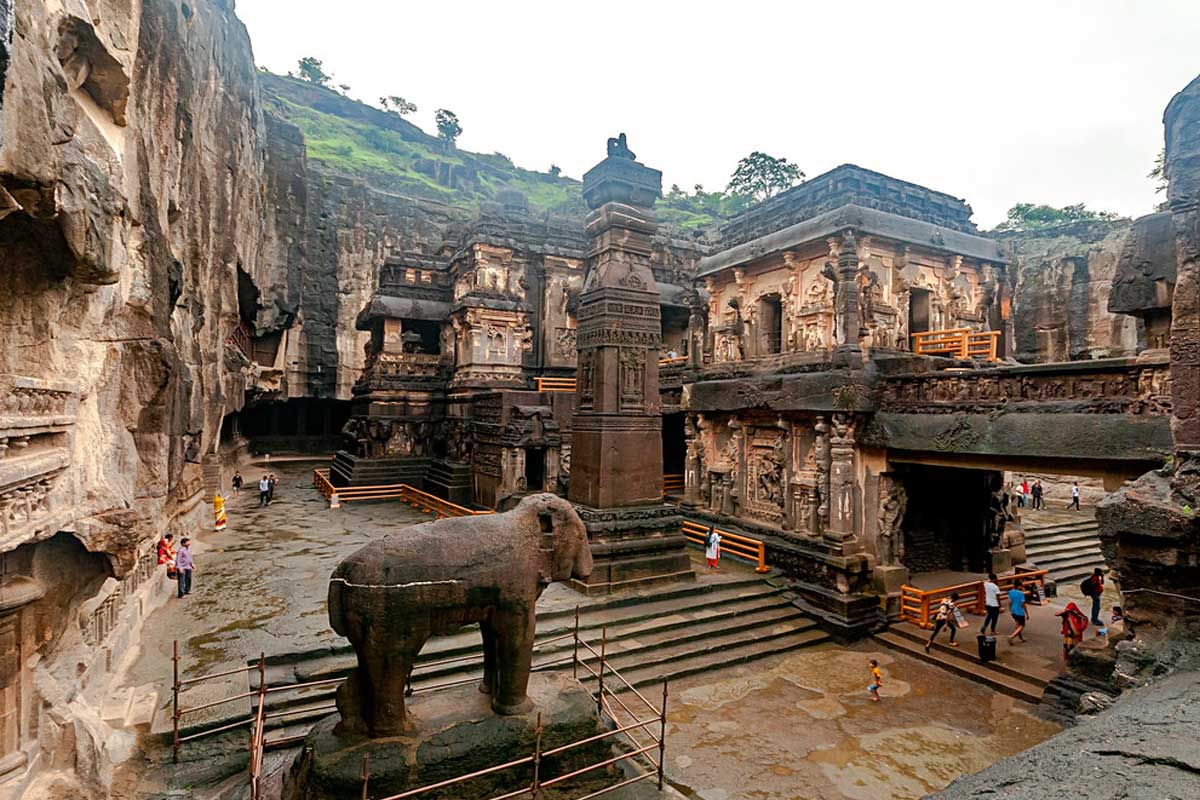
The Ellora Caves, also located in Maharashtra, demonstrate religious tolerance and syncretism, with Buddhist, Hindu, and Jain monuments crafted between the 6th and 10th centuries CE. These 34 caves are acclaimed for their architectural sophistication and vast artistic spectrum, including the awe-inspiring Kailash Temple—a monolithic rock-cut temple dedicated to Shiva.
7. Elephanta Caves
The Elephanta Caves, situated on Elephanta Island near Mumbai, were created between the 5th and 9th centuries CE. These rock-cut complexes feature prominent Hindu temples dedicated to Shiva, alongside Buddhist caves and dilapidated murals. Notably, the monumental Trimurti—a three-headed sculpture of Shiva—remains a highlight of Indian rock-cut art.
Which Is The Largest Cave In India?
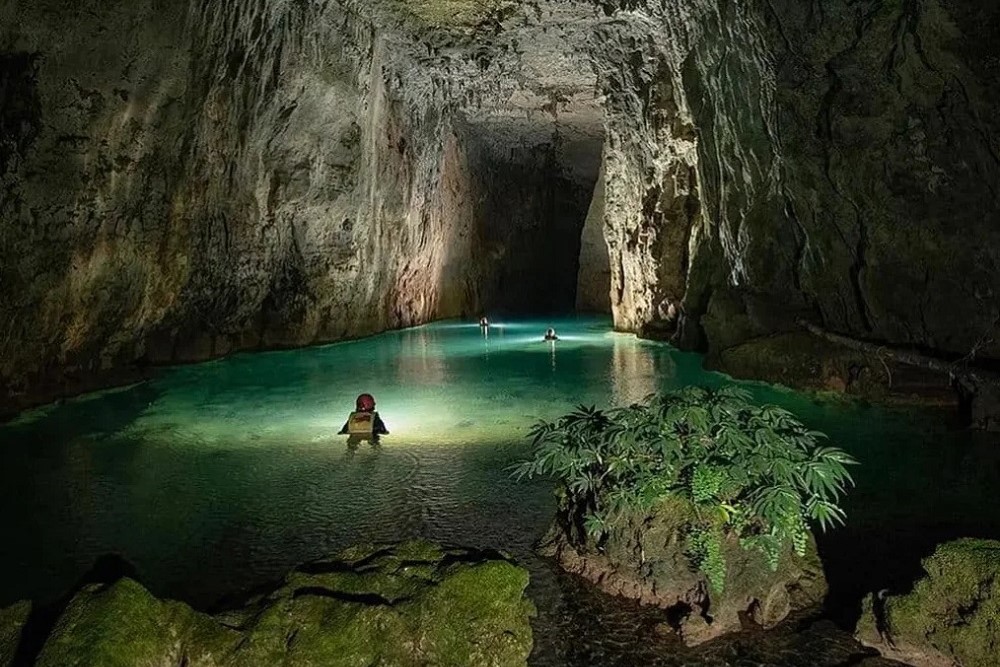
The title of India's largest cave system belongs to Krem Liat Prah, located in the Jaintia Hills of Meghalaya. This impressive natural limestone cave is the longest on the Indian subcontinent, with a surveyed length stretching for approximately 30.96 kilometres. Meghalaya is globally famous for its extensive and complex cave networks, and Krem Liat Prah stands out for its vast, maze-like passages and spectacular underground geological formations.
8. Bagh Caves
The Bagh Caves are a group of nine rock-cut monuments located in Madhya Pradesh. They date from the 5th to 7th century CE. Their history is rooted in Buddhist monasticism. They served as viharas (monasteries) for Buddhist monks. The caves are famous for their remarkable murals, which, unfortunately, are now badly deteriorated. These paintings are considered fine examples of the Gupta-era art style. The caves were first documented in 1818 by an English lieutenant, after having been obscured by nature for centuries.
9. Sittanavasal Cave
The Sittanavasal Cave is located in the Pudukkottai district, Tamil Nadu. It is a significant site for Jainism, dating primarily from the 7th to 9th centuries CE. The cave's history is linked to the Pandya dynasty and the patronage of Jain monks. The name "Sittanavasal" translates to "abode of great saints". The cave is renowned for its well-preserved frescoes, particularly the ceiling painting of a beautiful aquatic scene featuring a samavasarana (a Jain assembly hall).
10. Udayagiri Caves
The Udayagiri Caves are a collection of twenty rock-cut caves near Vidisha, Madhya Pradesh. They are dated to the 4th and 5th centuries CE, placing them squarely within the Gupta period. Their history is essential for understanding early Hindu rock-cut architecture and iconography. They are predominantly Hindu caves dedicated to Vishnu and Shiva. The most famous cave, Cave 5, features a colossal relief sculpture of Varaha (the boar incarnation of Vishnu) rescuing the Earth. These caves are historically significant because inscriptions found there record the reigns of Gupta kings.
Which Cave Paintings Are More Than 10,000 Years Old In India?
The most ancient cave paintings in India, dating back over 10,000 years, are found at the Bhimbetka Rock Shelters in Madhya Pradesh. This UNESCO World Heritage site is an extraordinary repository of prehistoric art, with some of the earliest paintings estimated to date back as far as 30,000 years to the Upper Palaeolithic period. The artwork from the Mesolithic period (around 10,000 BCE) prominently depicts scenes of hunting, dancing, and various animals like bison, deer, and elephants.
What Are The Oldest Caves In The World?
The Sudwala Caves in South Africa are carved into Precambrian dolomite rock, which is approximately 3.8 billion years old, making it the oldest rock in the area. However, in terms of the oldest known and dated open cave system, the Jenolan Caves in Australia are considered the record holder. Scientific dating of the clay found within the Jenolan Caverns suggests they have been actively forming for at least 340 million years, dating back to the Carboniferous period.
What Is The Second-Longest Cave In India?

The second-longest cave system in India is the Belum Caves, located in the Nandyal district of Andhra Pradesh. With a surveyed length of 3,229 meters (about 3.2 kilometres), Belum is the longest cave system in the Indian plains. This natural underground wonder is known for its spacious chambers, long passages, and remarkable speleothems, including stunning stalactite and stalagmite formations.




Comments
All Comments (0)
Join the conversation